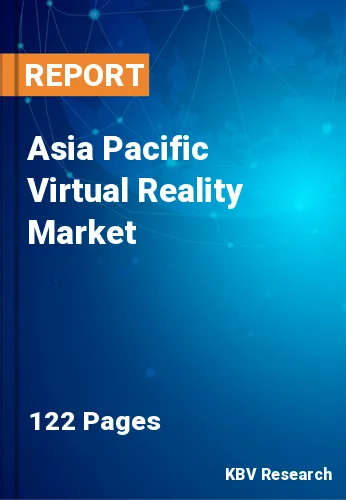The Asia Pacific Virtual Reality Market would witness market growth of 22% CAGR during the forecast period (2020-2026). Easy accessibility and affordability of VR devices is the major factor boosting the adoption of VR devices. The introduction of VR devices by local companies in countries like India and China has assisted in making such devices more affordable and boosting their wide-scale adoption. Furthermore, more opportunities also emerge for the market due to the integration of 5G with VR and developments in fully immersive technology. However, manufacturing because of SoC integration requires high cost, thereby becoming a significant restraint for the market vendors.
The application of virtual reality in the healthcare sector has been expanding and provides various advantages like robotic surgery, skill training, and surgery simulation. VR in the healthcare sector provides major benefits such as, it helps healthcare professionals in obtaining new skills and training on new operating machines which can be done in a secure environment. In the area of diagnostics, virtual reality assists medical practitioners to gain better insights in comparison to MRI scans and other techniques, hence eradicating the need for invasive surgeries or methods, until necessary. The leading players in the global VR market are Microsoft Corporation, Samsung Electronics, Facebook Inc., Google LLC, and Sony Corporation.
With the help of virtual reality, you can simulate formats such as retail pop-ups, stores, car dealerships, user experiences, bank branches, and retail decision points without having to create them. This could save the costs significantly because there is no requirement to manually build out various environments considered for testing. Another benefit of virtual reality research is speed since you can move between the simulated realities more or less easily. You can measure end-user engagement with, and reaction to what you are testing instantly when you come up with it, instead of waiting while a physical mock-up is built.
Based on Component, the market is segmented into Hardware and Software. Based on Device, the market is segmented into Head-mounted Display (HMD), Gesture-tracking Device (GTD) and Projectors & Display Wall (PDW). Based on Technology, the market is segmented into Semi & Fully Immersive and Non-immersive. Based on End User, the market is segmented into Consumer, Commercial, Healthcare, Enterprise, Aerospace & Defense and Others. Based on countries, the market is segmented into China, Japan, India, South Korea, Singapore, Malaysia, and Rest of Asia Pacific.
Free Valuable Insights: Virtual Reality Market in Asia Pacific is expected to register a CAGR of 22% during the forecast period (2020-2026)
The market research report covers the analysis of key stake holders of the market. Key companies profiled in the report include Google, Inc., Microsoft Corporation, Facebook, Inc., Sony Corporation, Samsung Electronics Co., Ltd. (Samsung Group), Autodesk, Inc., Dassault Systemes SE, Vuzix Corporation, Ultraleap Limited (Leap Motion, Inc.) and Eon Reality, Inc.
By Component
By Device
By Technology
By End User
By Country
Companies Profiled
Our team of dedicated experts can provide you with attractive expansion opportunities for your business.

